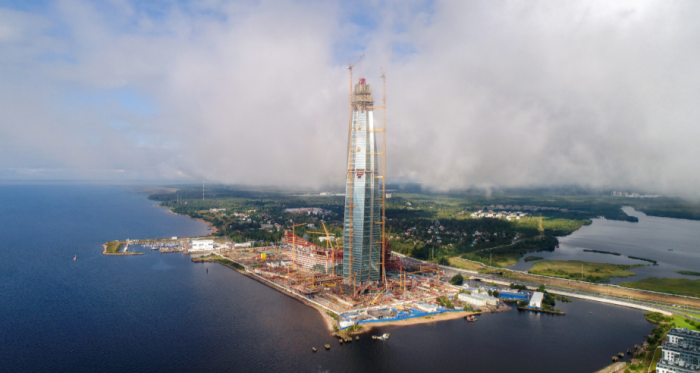
問題
ラフタ タワーは、フィンランド湾岸の社会およびビジネス用途向けに 2018 年に完成した建物です。現在、高さ 462 メートル (1,515.75 フィート) でヨーロッパで最も高い超高層ビルであるため、建設プロセスの前、最中、後に高品質のデータを取得することが重要でした。
データ収集システムは完全に自動化され、請負業者のオフィスにデータを送信できる必要がありました。ボックス基礎ひずみ監視システムは、タワーの構造健全性監視の中で最も野心的で複雑なサブシステムです。これは、 2015 年に世界最大の鉄筋コンクリート構造物 (19,600 m 3 [25,635.83 yd 3 ]) としてギネス世界記録に認定された基礎の応力ひずみ状態の変化を分析するように設計されました。プロジェクトの複雑さと関連するエンジニアリング上の課題のため、1,000 を超えるひずみゲージを測定できるシステムが必要でした。
解決策
SODIS Lab は、ひずみゲージ監視システムの設計と導入を担当しました。これらのシステムの導入は 6 段階に分かれています。彼らは、Campbell Scientific のデータ ロガーと周辺機器を使用してデータ収集ノードを構築しました。ノード間の通信は、一時的な有線データ ネットワークを介して提供されました。データ収集ステーションには、CR1000 データ ロガーと AVW200 VW インターフェイスが含まれていました。マルチプレクサ エンクロージャは、信号ケーブルのすべての出口ポイントの真上に設置されました。このソリューションにより、ケーブル ラインの長さが大幅に短縮され、構築中にケーブルが損傷する可能性が減り、修理が簡素化され、ケーブル ルーティングを迅速に変更できるようになり、ひずみゲージ ケーブルを接合する必要がなくなりました。
SODIS は、バイブレーティングワイヤ (VW) センサー ベースのモニタリングのために、このプロジェクトの時点でロシアで長年にわたり Campbell ベースの VW およびバイブレーティングワイヤ スペクトル分析 (VSPECT™) ソリューションを提供してきた Monitoring Solutions (MonSol) と協力することにしました。SODIS の下請け業者として機能していた MonSol は、Campbell の機器を供給するだけでなく、データ収集プラットフォームを提供することで統合システム レベルで供給しました。
結果
Campbell Scientific ベースのデータ収集システムは、Lakhta Tower の建設中に優れた品質のデータを提供し、多数のセンサーを管理することができました。データ ロガーと VW インターフェイスの汎用性により、地質工学機器をひずみ監視システムに簡単に統合できました。VSPECT™ テクノロジーは、外部のノイズ源に対する優れた耐性を提供しました。
このソリューションにより、ケーブル ラインの長さが大幅に短縮され、建設中にケーブルが損傷する可能性も減りました。修理が簡素化され、コスト効率も向上したため、ケーブル ルーティングをすばやく変更でき、ひずみゲージ ケーブルを接合する必要がなくなりました。さらに、建設中にビル管理システム (BMS) にインストールされた計測機器の統合により、継続的な構造監視という重要な機能が実現しました。